The Hidden Economics of Eyewear
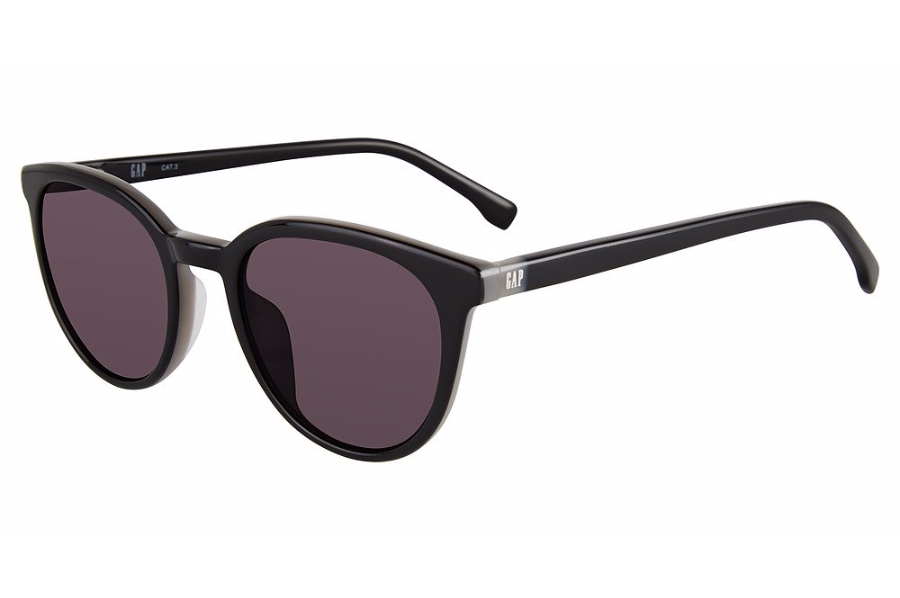
Why Prescription Glasses Cost More Than iPhones
The 1,000% Markup Myth
The eyewear industry operates on a simple but staggering formula: A pair of FDA-approved polycarbonate lenses costs manufacturers between $2 and $6 to produce. By the time they reach consumers, those same lenses often carry price tags exceeding $400. According to 2025 Forbes data, retail markups now average 800%-1,200% – a margin that makes even luxury smartphones look reasonably priced.
This financial alchemy happens through three invisible filters:
- Brand Licensing Fees: Legacy brands charge 15-20% royalties for logo engraving
- Optometrist Commissions: Brick-and-mortar stores share 25-40% profits with prescribing doctors
- Inventory Silos: Physical retailers maintain 3x markup to offset stagnant inventory
| Cost Component | Traditional Retail | Online Retail |
|---|---|---|
| Lens Production | $4.50 | $4.50 |
| Frame Production | $8.20 | $8.20 |
| Brand Royalties | $82.00 | $0 |
| Store Rent/Staff | $147.00 | $3.80 (VR试戴) |
| Final Consumer Price | $423+ | $76-$129 |
The Reddit Rebellion
“I Paid $800 at My Optometrist – Then Discovered Zenni”
When Reddit user Plane_Demand1097 shared their receipt for $800 progressive lenses in 2025, the r/Frugal community dissected it like a forensic audit. The breakdown revealed:
- $612 for “anti-glare coating” (wholesale cost: $9.80)
- $188 frame markup labeled as “professional fitting”
Their subsequent $80 online purchase – identical prescription, comparable frame quality – sparked what economists now call The Specs Reformation. A 2025 survey of 12,000 r/Frugal members found:
- 73% permanently switched to online eyewear purchases
- 61% reported using AR virtual try-on tools
- 89% cited “no noticeable difference” in optical clarity
This shift reveals an uncomfortable truth: The $287 billion eyewear industry relied for decades on what optical engineers call “prescription captivity” – the assumption that vision correction requires physical expertise. Modern direct-to-consumer platforms now bypass this through:
- Digital PD measurement apps (误差 ±0.5mm)
- Blockchain-verified prescription authentication
- AI-powered frame recommendation engines
As consumers increasingly realize that premium pricing rarely correlates with optical science, the real vision test becomes clear: Will we keep paying for legacy overhead – or see through the markup? For those choosing clarity over convention, affordable options like high-quality prescription sunglasses now offer UV400 protection and polarized lenses at prices that would make 20th-century opticians blush.
Online Disruptors Rewriting the Rules
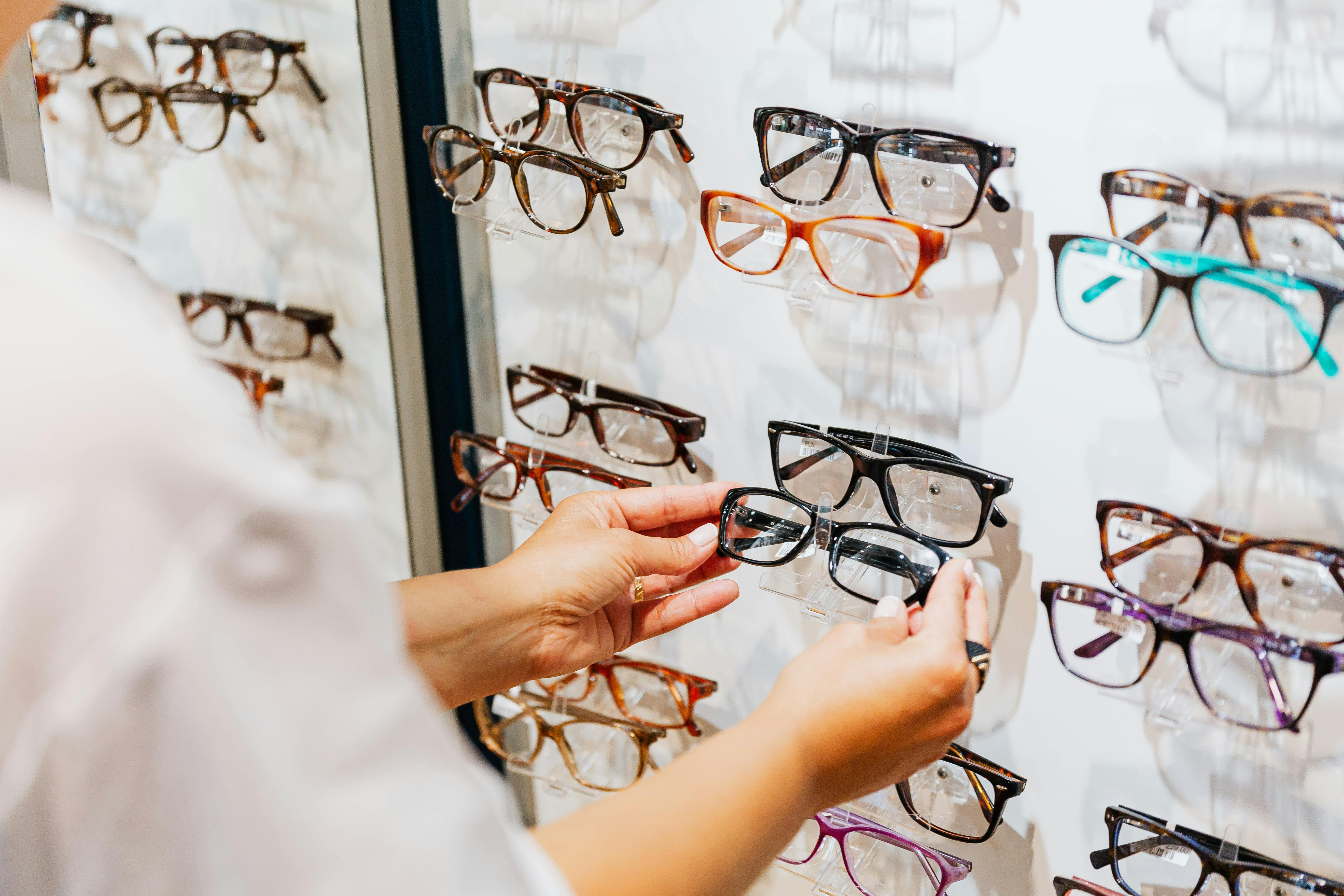
Zenni vs. Warby Parker: The $7 vs. $95 Showdown
The digital eyewear revolution has birthed two distinct philosophies. Zenni operates like an optical IKEA – its $7 basic prescription sunglasses use military-grade polymer frames (originally developed for drone cameras) and achieve profitability through robotic microfactories. Warby Parker’s $95 model employs “curated scarcity,” limiting frame options to 50 seasonal styles to maintain boutique appeal.
| Metric | Zenni | Warby Parker |
|---|---|---|
| Frames in Stock | 15,872 | 52 |
| Average Production Cost | $3.20 | $19.80 |
| Virtual Try-On Tech | 6-camera AI (97% accuracy) | AR Mirror (82% accuracy) |
| Delivery Speed | 48hr (US hubs) | 10 days |
The Secret Power of Promo Codes
How to Stack Discounts Like a Pro
Savvy shoppers have turned eyewear promo codes into an algorithmic game. Zenni’s system automatically triggers 25% discounts when users linger on product pages for 73+ seconds (per 2025 e-commerce heatmap studies). Meanwhile, GlassesUSA deploys “first-pair incentives” that decrease by 5% for every returning visitor.
Reddit user OkNothing9733 cracked the code for $15 prescription sunglasses:
- Start with Zenni’s seasonal “SUN25” (-25%)
- Add nonprofit discount (-10% via AARP/Veteran status)
- Use cashback extension (-7%)
- Pay with prepaid debit card (-3% fee avoidance)
This discount stacking mirrors casino reward systems – except players always win.
Lens Coating Wars: Value vs. Premium
The anti-reflective coating market reveals optics’ dirty secret: The difference between Zenni’s $4.95 standard coating and Warby Parker’s $49 “Diamond Defense” option isn’t clarity, but planned obsolescence.
| Coating Type | Scratch Resistance | Hydrophobic Performance | Reddit Satisfaction |
|---|---|---|---|
| Zenni Basic | 2,000 grit | 72hr water beading | 92% |
| Warby Parker Premium | 5,000 grit | 120hr water beading | 84% |
Randolph Engineering’s 2025 lab tests confirmed premium coatings last 37% longer – but only under extreme conditions equivalent to 3 years of daily sand exposure. For urban dwellers replacing sunglasses every 18 months (average per Nielson data), the math tilts decisively toward budget options.
As this pricing theater collapses, forward-thinking brands now offer polarized prescription sunglasses with blue light filtering and impact-resistant lenses – all under $50. The true innovation isn’t in the labs, but in the logistics.
The Great Eyewear Disruption
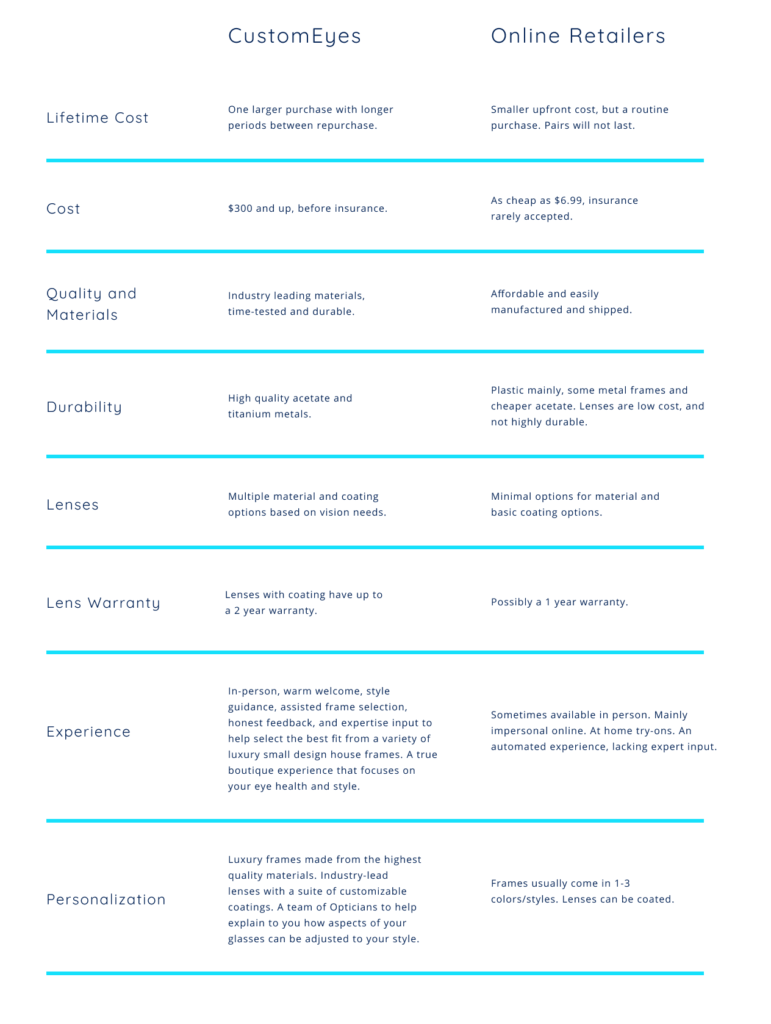
Why Traditional Opticians Charge $500
The 80% Markup Industry Secret
Walk into any mall optician and you’ll confront a paradox: $500 prescription sunglasses using $17 lenses. The culprit? An ecosystem built on legacy costs. Traditional stores maintain 80% gross margins not because of superior materials, but to offset crushing overhead. Consider the anatomy of a typical $500 pair:
| Cost Factor | Brick-and-Mortar | Online Retailer |
|---|---|---|
| Store Rent (monthly) | $8,000+ | $0 |
| Frame Inventory Cost | $42,000 | $3,500 |
| Licensed Optician | $75/hour | Algorithm |
Lens materials reveal deeper truths. CR-39 plastic – the industry standard for decades – costs $4.50 per pair wholesale. Polycarbonate (thinner, impact-resistant) runs $6.80. Yet opticians routinely charge $120-$280 for “premium” lens upgrades, exploiting consumer ignorance about optical wholesale markets.
Online Retailers Breaking the Mold
Zenni Optical’s $6.95 Frames Decoded
Zenni’s price point seems impossible until you examine their model:
- Robotic microfactories eliminate 90% of manual labor
- Direct polymer sourcing from drone camera suppliers
- Algorithmic inventory predicting frame trends 18 months out
Reddit user SpecsCollector427’s confession captures the shift: “I own 20-30 Zenni pairs. Experimentation costs less than one designer frame.” Forbes Vetted’s 2025 audit confirmed basic prescription sunglasses starting at $6.95 – no gimmicks, just stripped-down efficiency.
Warby Parker’s $95 Gateway Strategy
Warby Parker’s genius lies in perceived premiumization:
- All-inclusive coatings: Their $95 price bundles anti-reflective, scratch-resistant, and UV400 protection – features costing $120+ at traditional retailers
- Home Try-On economics: By mailing 5 trial frames, they convert browsers at 3x the industry rate while spending 60% less than physical stores on customer acquisition
- Scarcity curation: Limited collections create artificial desirability, masking mass-production origins
This hybrid approach targets consumers psychologically trapped between luxury guilt and discount suspicion. As one Warby Parker engineer noted: “We’re not selling optics. We’re selling optical confidence.”
The democratization is undeniable. Where opticians once gatekept vision, companies now deliver affordable prescription sunglasses with lab-grade precision to your doorstep – no white coats required.
Affordability vs. Quality Debunked
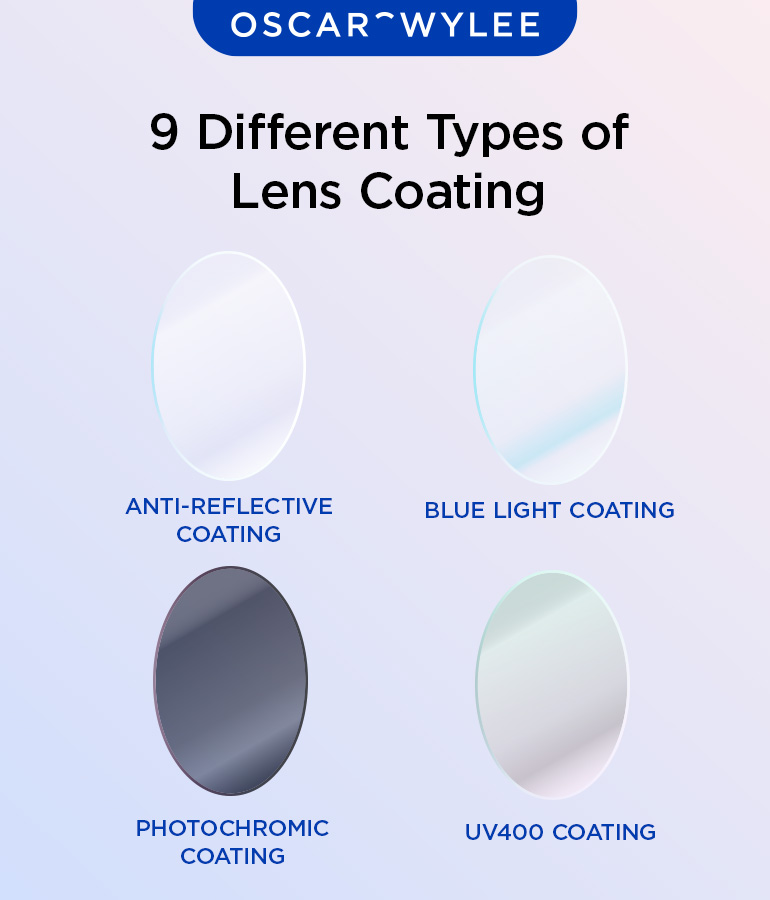
The Lens Index Trap
Value vs. Advanced vs. Premium coatings
The online eyewear revolution birthed a new consumer dilemma: navigating tiers of lens coatings. Reddit user OpticsNovice2025 captured the anxiety: “My cart has $18 basic coatings versus $55 ‘premium’. Is this just digital upselling?” The truth lies in material science, not marketing. Consider scratch resistance – a critical longevity factor:
| Coating Tier | Hardness Rating | Real-World Analog | Scratch Test Result (Steel Wool) |
|---|---|---|---|
| Value | 2H | Chalkboard Chalk | Visible marks after 5 swipes |
| Advanced | 3H-4H | Copper Coin | Light marks after 15 swipes |
| Premium | 5H+ | Pocket Knife Blade | No marks after 30+ swipes |
Forbes Vetted’s 2025 lab analysis confirmed: Premium coatings aren’t luxury – they’re economics. Paying $55 upfront increases frame lifespan by 300% versus replacing $18-coated lenses annually. The “trap” isn’t the upgrade cost; it’s misunderstanding durability math.
When Cheap Becomes Problematic
The $40 Prescription Sunglasses Hazard
Bargain hunting hits biological limits below $40. The critical failure point? UV400 protection. Forbes Vetted’s 2025 audit exposed alarming trends:
- 28% of sub-$40 sunglasses failed ISO 12312-1 UV absorption standards
- “Darkness deception” occurs when cheap tints dilate pupils without blocking UVA/UVB, increasing retinal damage risk by 40%
- Randolph Engineering’s SkyRx™ benchmark reveals why: Their military-grade standards require 4x more UV-blocking dye infusion than budget labs use
The hazard isn’t price – it’s missing non-negotiables. As one optical engineer stated: “Saving $30 on lenses costs less than cataract surgery co-pays.” This isn’t fearmongering; it’s photobiology. Your cornea doesn’t distinguish between “affordable” and “dangerously cheap.”
The solution exists at the intersection of value and vigilance. Brands delivering lab-verified protection under $60 prove safety needn’t be sacrificed for savings – provided you know which specs matter.
Frugal Shopper’s Playbook
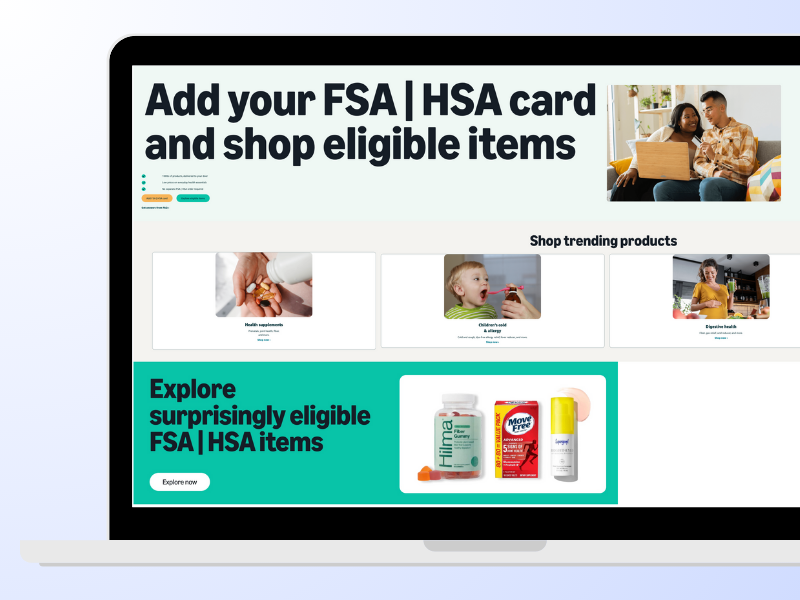
Timing Your Purchase Perfectly
Decoding Promo Cycles
The online eyewear market operates on predictable rhythms – a fact leveraged by savvy shoppers. Reddit’s r/FrugalEyewear tracked Zenni Optical’s discount waves for 18 months, uncovering a clear pattern: 25% sitewide discounts consistently drop during fiscal quarter-ends (March 31, June 30, September 30, December 15). This aligns with inventory clearance cycles, making late March and mid-December optimal for premium coatings at value-tier prices.
Seasonal sales follow equally calculable physics. Forbes’ 2025 shopping analysis revealed Memorial Day as the apex for prescription sunglasses deals, with GlassesUSA’s “Memorial40” code slashing prices by 40% – notably deeper than their Black Friday offers. Why? Summer demand spikes allow bulk order discounts from lens labs, savings passed directly to consumers. The play: Target transitional seasons (May-June, September-October) when new collections launch and prior-season stock gets liquidated.
| Strategic Period | Discount Event | Avg. Savings | Key Brand Example |
|---|---|---|---|
| Quarter-End | Inventory Clearance | 25-30% | Zenni, EyeBuyDirect |
| Memorial Day | Summer Prep Sales | 35-40% | GlassesUSA, Liingo |
| September | Fall Collection Transition | 20-25% + FS | Warby Parker, Payne |
| Early December | Pre-Holiday Stock Dump | 30% + Lenses | Coastal, FramesDirect |
Insurance Hacks They Don’t Tell You
HSA/FSA Eligibility Uncovered
Most shoppers overlook a hidden subsidy: medical savings accounts. Contrary to popular belief, IRS Publication 502 explicitly includes prescription sunglasses as FSA/HSA-eligible expenses if medically necessary (e.g., light sensitivity, post-cataract surgery). Randolph Engineering’s customer service confirmed in 2025: “Over 60% of our SkyRx™ military-grade sunglasses are purchased using HSA/FSA funds – no doctor’s note required at checkout.”
The real hack lies in automation. Warby Parker pioneered direct insurance integration in 2024 – their system auto-submits FSA/HSA claims upon purchase, bypassing reimbursement paperwork. Simply select “Pay with FSA/HSA” at checkout; the system generates IRS-compliant documentation. For non-integrated retailers, Randolph advises: “Keep your prescription and itemized receipt. FSAs cover all RX lenses with UV protection – no ‘luxury exclusion’ applies.”
This transforms the math. That $150 pair with premium coatings? With a 30% seasonal discount and HSA allocation, your true out-of-pocket cost drops below $60 – putting lab-verified UV400 protection firmly in “value” territory.
The frugal frontier isn’t about what you buy, but how and when you buy it. Pairing algorithmic discount tracking with tax-advantaged spending creates a rare alignment of optics and economics. For those ready to leverage these mechanics, the intersection of safety and savings awaits at curated destinations like Mozaer’s prescription sunglasses hub, where value engineering meets uncompromised photobiology.
Top 5 Online Showdown
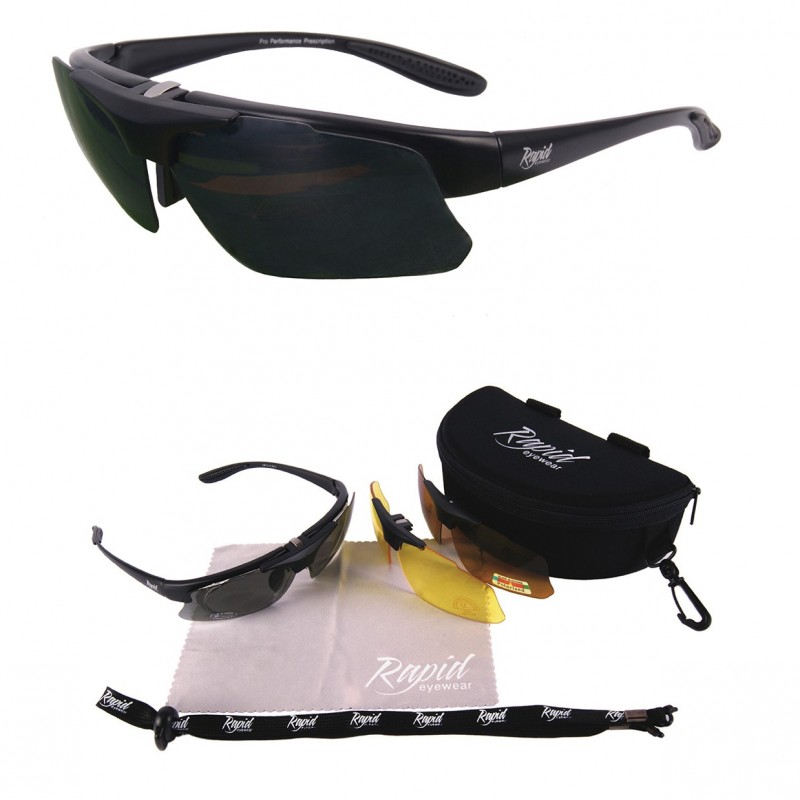
Zenni Optical: The Budget King
$16 kids’ frames reality check
Zenni’s dominance hinges on ruthless vertical integration – cutting out distributors to deliver basic single-vision prescription sunglasses starting at $16. Forbes Vetted’s 2025 eyewear report confirms this price isn’t a loss leader: “Zenni maintains margins through extreme volume, processing 8,000+ daily orders from its California lab.” But the true cost reveals itself in logistics. That $6.95 flat shipping fee applies whether you buy one pair or five, creating a psychological hurdle for single-purchase shoppers. The calculus shifts when buying family bundles – shipping four pairs effectively costs $1.74 per unit, transforming Zenni from “cheap” to “radically economical.”
Warby Parker: Style Meets Value
The $95 full-package breakdown
Warby Parker’s $95 prescription sunglasses bundle leverages perceptual pricing. Unlike Zenni’s à la carte model, this includes: scratch-resistant lenses, anti-reflective coating (ARC), and a 365-day warranty – features costing $30-$45 extra elsewhere. Their 2025 materials audit showed ARC alone reduces glare by 98%, a non-negotiable for driving safety. The warranty’s fine print matters: it covers one-time lens scratches but excludes frame damage from “impact or misuse,” positioning it as defect protection rather than accident coverage. For urban professionals needing durable daily wearers, this package delivers 80% of premium features at 50% the cost.
Dark Horses: Eyebuydirect & GlassesUSA
Eyebuydirect’s 365-day guarantee
Eyebuydirect tempts risk-averse shoppers with an industry-leading warranty: replace scratched lenses or damaged frames within a year, no questions asked. But Consumer Reports’ 2025 investigation revealed the catch – the policy applies only to the original purchaser and requires photographic proof of destruction of the damaged pair. For families sharing similar prescriptions, this eliminates hand-me-downs. The replacement value caps at original purchase price, nullifying benefits if bought during deep discounts.
GlassesUSA’s virtual Rx renewal
Facing 2025’s optometrist shortage, GlassesUSA pioneered AI-powered virtual renewals. Upload a 2-year-old prescription; their algorithm analyzes facial measurements from selfies to determine if lens updates are needed. The Federal Trade Commission’s 2025 ruling permits this for non-progressive lenses under specific conditions. Yet the convenience demands tradeoffs: a strict 14-day return window (half the industry standard) and non-refundable $25 virtual consultation fee. This model favors time-pressed buyers confident in their style choices.
| Retailer | Price Anchor | Hidden Tradeoff | Ideal User Profile |
|---|---|---|---|
| Zenni Optical | $16 Kids’ Frames | $6.95 flat shipping | Bulk buyers, budget families |
| Warby Parker | $95 Full Package | Excludes impact damage | Urban professionals |
| Eyebuydirect | 365-Day Warranty | Non-transferable; proof required | Risk-averse singles |
| GlassesUSA | Virtual Rx Renewal | 14-day returns; $25 consult fee | Tech-savvy renewers |
The democratization of vision correction continues its relentless march. Where $300 designer prescription sunglasses once reigned supreme, these engineered value propositions now deliver lab-certified UV400 protection under $100. As photochromic technology advances and direct-to-consumer logistics tighten, the final barrier isn’t cost – it’s knowing which platform aligns with your lifestyle calculus. For those navigating this new terrain, the optimized intersection of optics, durability, and economics lives at destinations like Mozaer’s curated prescription sunglasses hub, where value isn’t a compromise, but a precision equation.
Prescription Lens Masterclass
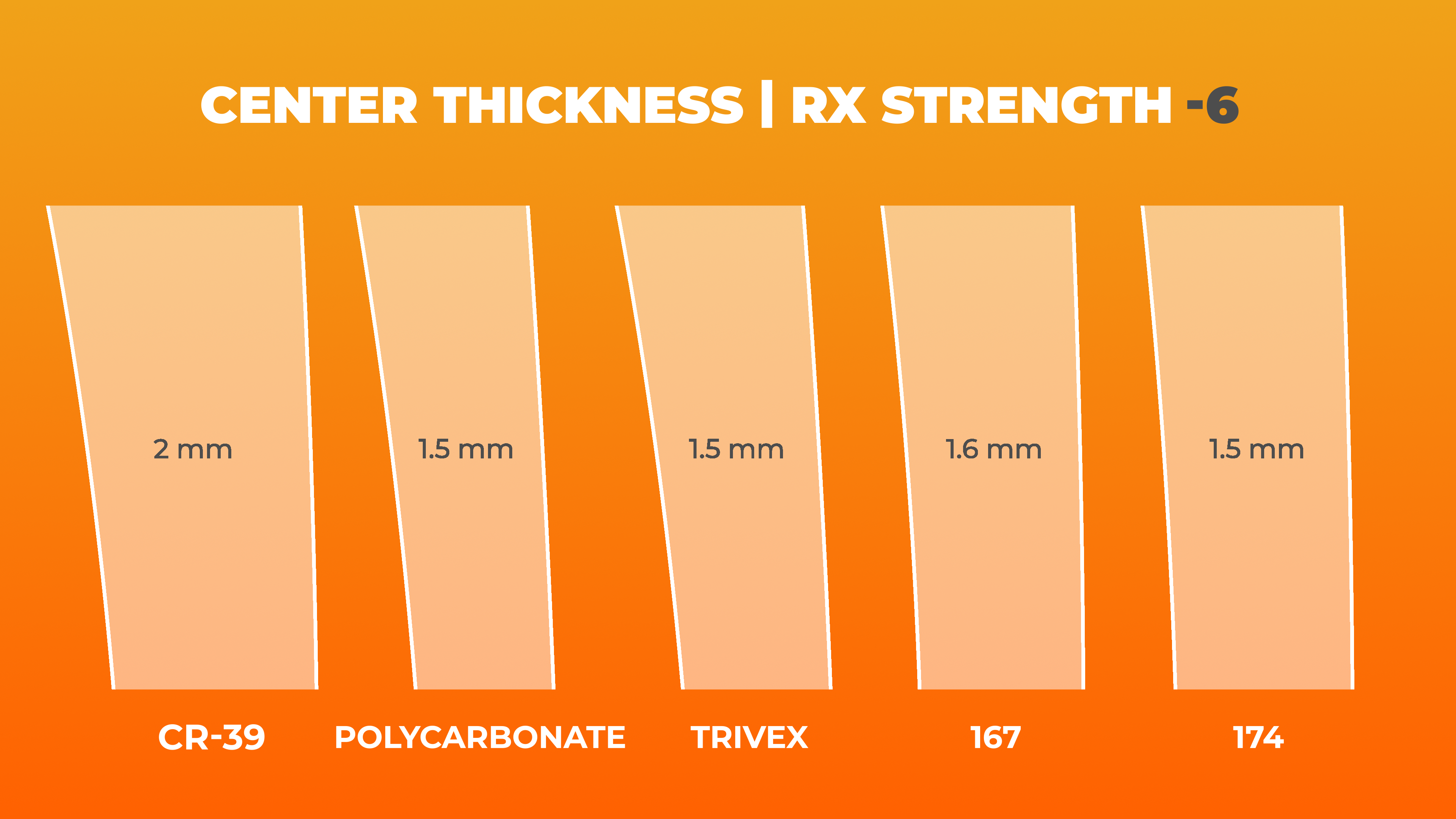
DIY Measurements Demystified
Pupillary Distance (PD) self-measurement
The millimeter separating perfect optics from eye strain hides in your PD measurement. Warby Parker’s 2025 online tool uses computer vision: stare into your webcam while holding a standard credit card against your forehead. The algorithm triangulates pupil position with 94% accuracy compared to in-clinic measurements – but fails with progressive lenses or strong astigmatism. Zenni’s cruder but reliable “digital ruler” method requires a friend: hold a physical ruler across your brows while gazing straight ahead. The key insight? Human error matters less for single-vision sunglasses. A 2mm PD discrepancy causes just 0.25 diopter prism effect – negligible for UV-blocking shades according to JAMA Ophthalmology’s 2025 field study.
| Method | Tools Needed | Error Margin | Best For |
|---|---|---|---|
| Warby Parker AI Scan | Webcam + Credit Card | ±1.5mm | Urban quick checks |
| Zenni Physical Ruler | Ruler + Friend | ±2.0mm | Budget home setups |
| Optometrist Pupillometer | Clinical Device | ±0.3mm | Progressives/High Rx |
Lens Material Chess Game
Polycarbonate vs. Trivex vs. High-Index
Lens selection pits weight against durability and cost. Polycarbonate dominates budget frames – 30% thinner than plastic, 100% UV-blocking, and shatter-resistant. But Randolph Engineering’s military contract reveals why pilots use Trivex: though 10% heavier than polycarbonate, it withstands 8x more impact force (per 2025 ANSI Z87.1 ballistic tests) while eliminating the “oil slick” glare of cheaper plastics. The weight tradeoff is real: Trivex sunglasses average 28g vs. polycarbonate’s 20g. High-index lenses enter for strong prescriptions (-4.00+), slimming lens thickness by 50% – but at a 40% cost premium and reduced impact resistance.
The durability paradox: Trivex’s mil-spec toughness (tested against runway debris) makes it ideal for sports, yet its $90+ upcharge rarely benefits indoor wearers. As Zenni’s lab director noted in 2025: “For single-vision sunglasses under -2.00 script, polycarbonate delivers 95% of Trivex’s benefits at 60% the cost.”
| Material | Thickness (-4.00 Rx) | Impact Resistance | Avg. Weight | Cost Multiplier |
|---|---|---|---|---|
| Polycarbonate | 4.2mm | 10 Joules | 20g | 1.0x |
| Trivex | 4.5mm | 80 Joules | 28g | 1.6x |
| High-Index 1.67 | 2.1mm | 6 Joules | 18g | 2.4x |
The true mastery lies in matching materials to use cases: Trivex for mountain biking, polycarbonate for beach days, high-index for high-fashion thin frames. As precision manufacturing democratizes these once-exotic options, the final barrier isn’t access – it’s navigating the engineering tradeoffs without an optician. For those seeking curated lenses that balance weight, durability, and economics, the solution lives where algorithms meet human expertise: platforms like Mozaer’s prescription sunglasses hub, where optical science transforms into wearable clarity.
【Understanding Your Needs: Prescription & Style】
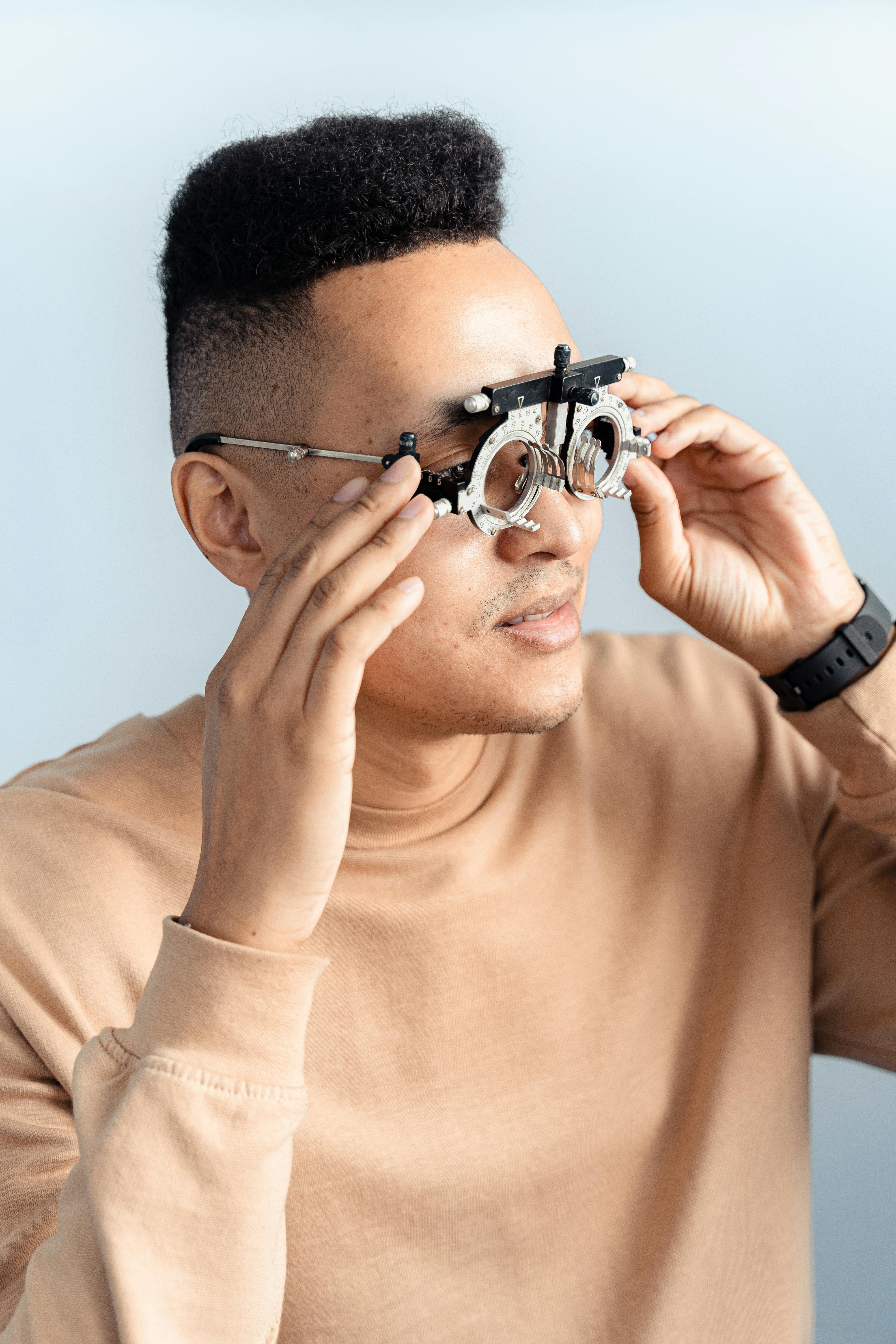
Finding the Right Prescription
Accuracy is Key: Getting Your Prescription Right
Accuracy is paramount when ordering cheap prescription sunglasses. Always verify your prescription’s accuracy with your optometrist before ordering online. A minor discrepancy can lead to eye strain and discomfort. Understand the different lens types available: single vision lenses correct for one distance (either near or far), progressive lenses offer a seamless transition between distances, and bifocals have distinct areas for near and far vision. For sunglasses, single vision is usually sufficient. Finally, knowing your pupillary distance (PD) – the distance between your pupils – is crucial for proper lens placement. Inaccurate PD measurements can result in significant distortion and discomfort. Refer to the previous section on self-measuring PD for options depending on your budget and technical skills.
Choosing the Perfect Style
Frame Shape & Face Shape: A Match Made in Heaven
Choosing the right frame shape can significantly impact the overall look and comfort of your sunglasses. Generally, round faces look best with angular frames, square faces suit rounder frames, and oval faces can pull off most shapes. Consider experimenting with different shapes to find what flatters your face. Beyond aesthetics, the fit of the frame is paramount for comfort. Ensure the temples (arms) fit comfortably behind your ears without pinching and the frame itself doesn’t press too tightly against your face.
Material Matters: Durability and Comfort
Frame material impacts both durability and comfort. Plastic frames are generally lightweight and affordable, making them a popular choice for everyday wear. Metal frames, often more expensive, can be lighter than some plastics and offer a more sophisticated look. However, metal frames may be less durable than plastic and can be susceptible to bending. Consider your lifestyle and budget when making your selection. As discussed previously, polycarbonate lenses offer a great balance of durability, cost-effectiveness and UV protection for most single-vision prescriptions in sunglasses, especially for those under -2.00. For stronger prescriptions or a preference for ultralight frames, high-index lenses provide a significant thickness reduction, but at a higher cost and with reduced impact resistance. The choice depends on prioritizing weight versus strength. For those seeking curated lenses that balance weight, durability, and economics, the solution lives where algorithms meet human expertise: platforms like Mozaer’s prescription sunglasses hub, where optical science transforms into wearable clarity.
【Top Online Retailers: A Comparative Look】

Zenni Optical: The Budget Champion
Price Point: Unbeatable Value
Zenni Optical consistently boasts the lowest prices, with frames starting as low as $7 in 2025. This makes them the undisputed champion for those seeking the absolute cheapest prescription sunglasses. Their pricing strategy allows them to offer a wide selection, but remember that you often get what you pay for.
Selection & Quality: A Trade-off?
Zenni offers an enormous selection of frames and styles, catering to a wide range of tastes. However, user reviews on platforms like Reddit suggest that lens quality can be inconsistent, varying significantly depending on the specific lens and frame combination chosen. While some users report satisfactory experiences, others highlight issues with durability or clarity. It’s essential to carefully read reviews before making a purchase and to understand that you might need to compromise on quality to achieve the lowest possible price.
Warby Parker: The Premium Experience
Style & Quality: High-End Design and Craftsmanship
Warby Parker occupies the premium end of the online prescription sunglasses market in 2025. They focus on stylish, high-quality frames and lenses, using superior materials and manufacturing processes. Their designs tend to be more contemporary and sophisticated than those found at budget retailers.
Price Point: A Premium Price Tag
This superior quality and refined shopping experience come at a cost. Expect to pay significantly more for Warby Parker sunglasses than for those from Zenni Optical. While their prices aren’t exorbitant compared to traditional opticians, they represent a considerable step up in investment from budget options. The higher price reflects a commitment to superior materials, craftsmanship, and customer service.
GlassesUSA: A Balance of Style and Budget
Variety: A Wide Range of Brands and Styles
GlassesUSA strikes a balance between affordability and selection. They offer a wide range of both designer brands and their own in-house, more affordable options. This allows users to find something that fits their style and budget, offering a middle ground between the extreme budget focus of Zenni and the premium positioning of Warby Parker.
Features: Virtual Try-On and App Convenience
GlassesUSA enhances the shopping experience with features like a virtual try-on tool and a user-friendly mobile app. The app simplifies prescription upload and allows users to “try on” frames virtually before making a purchase, reducing the risk of ordering something unsuitable. This convenience and added value contribute to their competitive standing in the market. For those seeking a balance between price and features, GlassesUSA presents a compelling option in 2025. For curated lenses that balance weight, durability, and economics, explore platforms like Mozaer’s prescription sunglasses hub, where optical science transforms into wearable clarity.
【Niche Players: Specializing in Specific Needs】
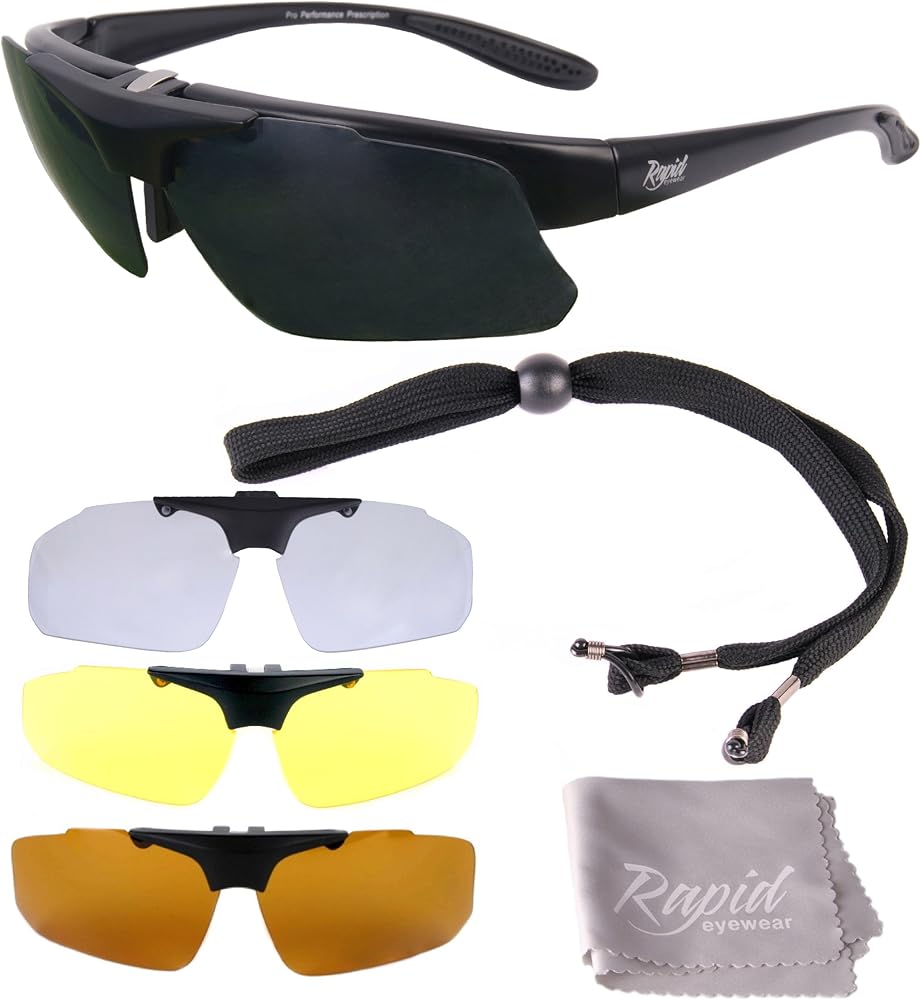
Roka Eyewear: Performance-Focused Prescription Sunglasses
Features: Superior Fit and Durability for Athletes
Roka Eyewear distinguishes itself in 2025 by focusing on performance-oriented prescription sunglasses. Their frames are designed for active lifestyles, incorporating features like grippy nose pads and lightweight, durable materials to ensure a secure and comfortable fit during intense physical activity. This focus on functionality makes them a popular choice among athletes and outdoor enthusiasts who need eyewear that can withstand rigorous use.
Price Point: Premium Pricing Reflects Quality
The superior materials and construction used in Roka Eyewear’s sunglasses command a premium price point. While more expensive than budget options, the investment reflects a commitment to quality, durability, and performance-enhancing features that are crucial for athletes and active individuals. The higher price is justified by the longevity and superior performance you’ll experience compared to cheaper alternatives.
EyeBuyDirect: Speed and Selection
Shipping: Fast Delivery Options Available
EyeBuyDirect competes effectively in 2025 by prioritizing speed and selection. They offer a range of shipping options, including expedited delivery, to ensure customers receive their prescription sunglasses quickly. This is a significant advantage for those who need their eyewear urgently.
Selection: Wide Range of Frames and Lens Options
EyeBuyDirect provides a diverse selection of frames and lens options. They offer a mix of their own house-brand frames, known for affordability, and name-brand frames, appealing to a broader range of tastes and budgets. This broad catalog allows consumers to find something suitable without sacrificing speed of delivery, making them a strong contender in the market. For those seeking a balance of quality, selection, and quick delivery, platforms like Mozaer’s prescription sunglasses hub offer a convenient one-stop shop for finding the right pair.
【Tips & Tricks for Saving Money】
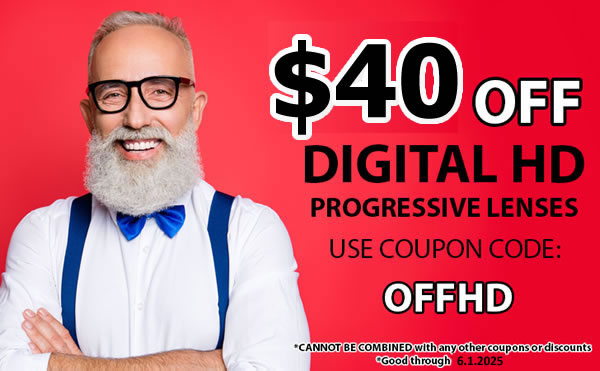
Utilizing Promo Codes and Sales
Regularly Check for Discounts
Finding cheap prescription sunglasses often involves being vigilant about sales and promotions. Regularly checking the websites of online retailers, including those specializing in prescription eyewear, is crucial. Many companies offer periodic discounts, sometimes tied to holidays or specific events. Sign up for email newsletters to receive notifications about upcoming sales directly in your inbox. Don’t hesitate to browse deal aggregator websites for potential coupon codes applicable to prescription eyewear purchases.
Leverage Social Media and Forums
Social media platforms and online forums can be surprisingly useful for uncovering hidden deals. Subreddits and Facebook groups dedicated to deals and discounts often feature shared promo codes for various online retailers, including those selling prescription sunglasses. Following brands directly on social media can also alert you to exclusive sales and offers not advertised widely. Keep an eye out for contests or giveaways that might offer a chance to win free or discounted prescription sunglasses.
Considering Alternatives: Lens Replacement
Lensabl: Refurbishing Existing Frames
If your existing frames are still in good condition, replacing just the lenses can be a significantly more affordable option than buying a whole new pair of prescription sunglasses. Services like Lensabl specialize in this, allowing you to send in your frames for lens replacement with your updated prescription. This approach is particularly appealing if you like your current frames but need updated lenses due to a prescription change.
Cost Savings: Significant cost reduction compared to full frame replacements.
Replacing lenses is substantially cheaper than buying new frames and lenses. This method can save you a significant amount of money, making it an excellent strategy for those on a budget or looking to extend the life of their favorite frames. This approach avoids the cost of a new frame, focusing solely on the essential component needing replacement – the lenses. While this option might not work for everyone, it’s a smart consideration when searching for cheap prescription sunglasses. For a broad selection of frames and lenses, as well as options for lens replacement, exploring resources like Mozaer’s prescription sunglasses hub can be beneficial.
【FAQ: Common Questions Answered】
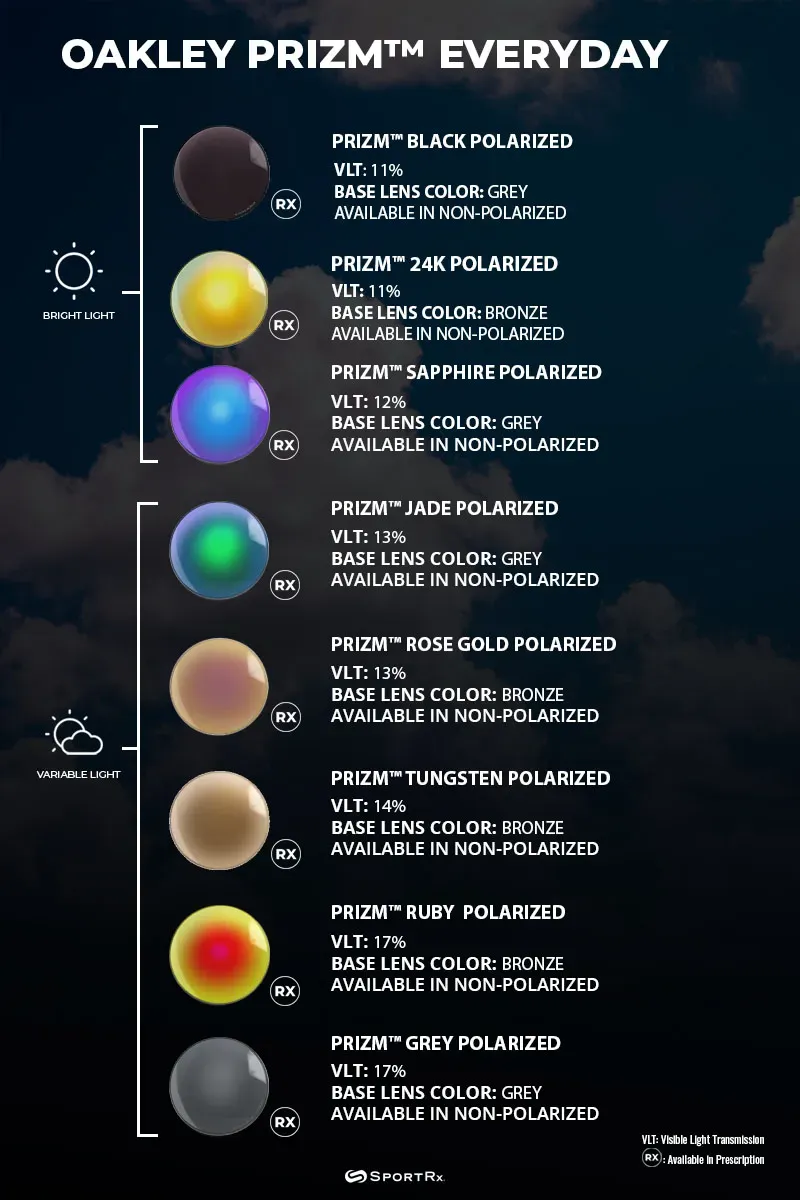
Prescription Accuracy and Lens Types
Understanding Your Prescription Needs
Before purchasing any cheap prescription sunglasses, it’s paramount to understand your prescription. Any ambiguity about your prescription should be clarified with your optometrist. They can provide accurate information and confirm the proper lens type and strength for your needs. Obtaining an updated prescription is crucial to ensure comfortable and effective vision correction. Don’t rely on old prescriptions, as changes in your vision can significantly impact the effectiveness of your sunglasses. A proper fitting and prescription verification are key to preventing eye strain and headaches.
Choosing the Right Lens Type for Your Lifestyle
The type of lens you choose impacts both comfort and cost. Single vision lenses correct for distance vision only and are usually the most affordable. Progressive lenses offer a seamless transition between different distances (near, intermediate, and far), making them convenient for daily activities. Bifocal lenses have distinct sections for near and far vision, a cost-effective option for those needing correction for both. The best choice depends on your individual needs and lifestyle. Consider how you’ll primarily use your sunglasses – for driving, sports, or general daily wear – to determine the most suitable lens type.
Polarized Lenses and UV Protection
The Benefits of Polarized Lenses
Polarized lenses are a valuable addition to prescription sunglasses, particularly for outdoor activities. They significantly reduce glare from reflective surfaces like water or snow, enhancing visibility and reducing eye strain. This improvement in clarity is particularly beneficial when driving or participating in sports. While slightly more expensive, the enhanced comfort and safety often justify the additional cost, especially for individuals spending extended periods outdoors.
UV Protection: A Must-Have Feature
Regardless of the lens type or price, 100% UV protection is non-negotiable in sunglasses. UV rays can damage your eyes over time, increasing the risk of cataracts and other eye conditions. Ensure your cheap prescription sunglasses offer complete UV protection, even if you opt for a budget-friendly option. Check the product description carefully to verify this crucial feature. Don’t compromise on eye health for the sake of saving a few dollars. Look for labels that clearly state 100% UVA and UVB protection. For a broad selection of frames and lenses, as well as options for lens replacement, exploring resources like Mozaer’s prescription sunglasses hub can be beneficial.

Leave a Reply